Toni and others interested
Here is an article written for the New York Times about a major disease issue in Florida.
Deadly Pathogen Harms Florida Citrus Groves
By DAVID KARP
The New York Times, August 26, 2008
http://www.nytimes.com/2008/08/26/science/26citrus.html
FORT PIERCE, Fla. On a recent sultry morning, Peter McClure, who manages 8,000 acres of citrus in the prime Indian River region here, surveyed an orange grove riddled with gaps. He pointed to a tangled brown pile of dead trees and said, "Scientists have 10 years at the most to find a solution, or thereÂs not going to be a citrus industry in Florida."
The worldÂs most destructive citrus disease is threatening the groves of Florida, the largest domestic producer of these fruits. The disease, which obstructs the flow of nutrients in citrus trees, originated more than a century ago in southern China, where it was named huanglongbing, or "yellow shoot disease," after a typical symptom.
It also goes under the common name of greening, because many fruits remain green and are lopsided and bitter. Infected trees die within several years.
The form in Florida is associated with a bacterium, Candidatus Liberibacter asiaticus, that is transmitted by a tiny insect, the Asian citrus psyllid (Diaphorina citri), which thrives on young citrus leaves.
Since it was first recognized in the United States  near Miami in 2005  the disease has spread across Florida. Timothy R. Gottwald, an epidemiologist with the federal Department of Agriculture, has projected that virtually all the stateÂs citrus trees will be infected in 7 to 12 years.
The methods now used to control the disease  spraying to kill psyllids and removing infected trees  have proved inadequate. Many farmers are not replanting, because young, vigorous trees attract psyllids.
To save their $9 billion industry, Florida citrus growers have shifted money to a huge research program from advertising. Spending will triple to $20 million next year and support more than 100 research projects, said Mr. McClure, who is chairman of the Florida Citrus Production Research Advisory Council.
Greening is so destructive that in 2003 the Department of Agriculture listed Cd. L. asiaticus among the potential bioterror tools called "select agents," restricting access to F.B.I.-vetted researchers and secure greenhouses. Now that the disease is endemic in Florida, these controls chiefly hinder research, and the department proposed a year ago to declassify Cd. L. asiaticus.
This month, Florida citrus scientists discovered they could apply for more exemptions to the select agent rules, which could be crucial for expanding research pending declassification.
The greening pathogen has proved extremely difficult to cultivate in the laboratory, because it is so exacting in its nutritional requirements, said Michael J. Davis, a University of Florida plant pathologist who has co-cultured Cd. L. asiaticus with another bacterium. In late July he observed the bacterium under a light microscope for the first time, and he is optimistic he will culture it by itself. (Some scientists, however, suspect that the disease may be caused by the interaction of multiple bacteria.)
Researchers at the departmentÂs laboratory here in Fort Pierce are sequencing the pathogenÂs genome. They have mapped the genome in fragments, which they are trying to assemble into a consistent whole, Dr. Gottwald said.
On a broader scale, an international consortium led by Fred Gmitter Jr. of the University of Florida is sequencing the genome of an important host, clementine. That genome map should be complete by December 2009, he said.
Scientists expect that successful culturing and sequencing will facilitate studies of interactions between the host, the bacteria and the insect that acts as a carrier or vector of the disease. It is expected to suggest strategies to interfere with the genetic expression of the disease, and aid in development of diagnostic tools.
Growers urgently need such tools for early detection, because infected trees may not show symptoms for months or years, during which they are contagious. Current molecular diagnostic tests do not detect the disease soon enough to stop its spread, but Abhaya Dandekar of the University of California, Davis, is working on an electronic nose to identify volatile organic compounds produced by infected trees.
Oranges and grapefruits, FloridaÂs main citrus crops, are susceptible to greening, while lemons and some limes seem tolerant, said William Dawson of the University of Florida. Breeders would like to hybridize new varieties fully resistant to greening, but have not identified any resistant citrus species for making crosses, which would take decades to bear useful results.
Intriguingly, however, Dr. Gmitter is working with scientists in southern China to study a few trees that appear to be thriving in severely infected groves.
Most scientists think the most promising long-term strategy is to transform commercial varieties genetically to make them resistant. Jude W. Grosser of the University of Florida has inserted genes that confer bacterial resistance into more than 100 citrus plants.
In a greenhouse protected with barbed wire, he showed a two-foot-tall transgenic grapefruit tree that had been inoculated with diseased budwood a year ago, but had remained symptomless and tested negative for the disease. While the introduction of genetically modified citrus would be controversial, Dr. Grosser maintained that "itÂll probably come down to the point where people have to decide whether they want orange juice or not."
Similarly, economists fear that if Florida citrus plantings decline too much below the current level, roughly 530,000 bearing acres, the infrastructure vital to the industry, like processing plants and packing houses, will close.
To keep FloridaÂs citrus industry going, William S. Castle of the University of Florida is working with growers to test an "advanced production system" using closely spaced, intensively managed trees that bear heavier crops at an earlier age, so farmers can make a profit before their trees die. South African growers have coped with greening this way for many years, but it remains to be seen if the model will work under FloridaÂs conditions.
Scientists visiting Vietnam observed that some citrus groves interplanted with guava trees survived while others without guavas died of greening. Dr. Gottwald is preparing a 60-acre test planting to see if this protective effect works in Florida.
Interplanting thousands of acres with guavas may be impractical, but a team including Lukasz L. Stelinski of the University of Florida has identified the compound in guava foliage that repels psyllids, and is working on a synthesized, controlled-release spray to protect groves. It should be available within two years, he said.
"There may be no single solution, no silver bullet," Mr. McClure said. "What we hope to find is four or five brass bullets. But weÂve got to hurry, because I donÂt want to find a solution for a dead industry."
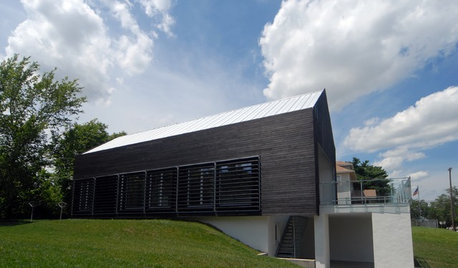
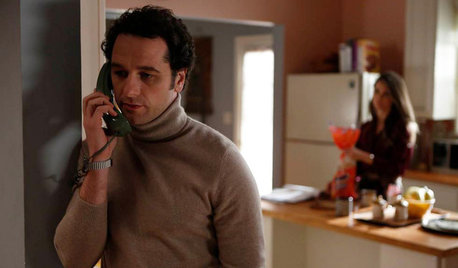




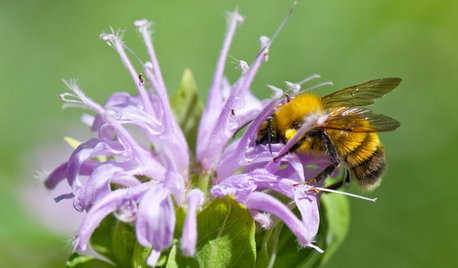






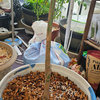
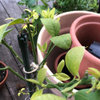
gatormomx2
Related Discussions
four winds ,,,,,wow
Q
I don't think the Florida ban will end anytime soon
Q
Alfalfa meal banned?
Q
Please help :-( Oranges and bannanas
Q